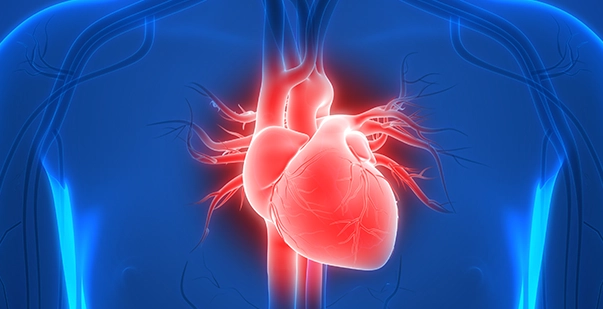Table of Contents:
- Introduction
- How Does Aortic Sclerosis Affect the Heart?
- Symptoms of Aortic Sclerosis
- Is Mild Aortic Sclerosis Dangerous?
- Aortic Sclerosis vs. Aortic Stenosis: What’s the Difference?
- How Is Aortic Sclerosis Diagnosed?
- Aortic Sclerosis Treatment: What Are Your Options?
- Conclusion
Introduction
Aortic sclerosis is a condition in which the aortic valve thickens because of calcium deposition, but it has no impact on the blood flow like aortic stenosis. While it may sound concerning,often many people wonder whether this disease is actually harmful or not. The definition of aortic sclerosis, its symptoms, and if its impact on heart health should worry you are all covered in this article. We’ll learn about how this condition is developed and diagnosed and what are the most recent medical standards recommended for its treatment and aftercare.
How Does Aortic Sclerosis Affect the Heart?
Aortic sclerosis is a condition in which the aortic valve thickens or becomes calcified. While there are usually no symptoms in the beginning, this issue mostly impacts older people and, if left untreated it can result in cardiovascular problems down the road.
Aortic sclerosis without stenosis does not directly affect blood flow, in contrast to aortic stenosis, which restricts the valve’s opening. It’s necessary to remember that even though aortic sclerosis may appear harmless at first, doctors believe it could be a sign of more severe valve disease. To manage this disorder and possibly decrease its growth, lifestyle changes and routine monitoring are often suggested.
Symptoms of Aortic Sclerosis
As aortic sclerosis may not display clear symptoms, it frequently goes undiagnosed. Nevertheless, in more serious situations or in relation to further heart condition, the person may encounter:
- Breathlessness
- Pain in the chest and Fatigue
- Dizziness and fainting
It’s important to see your doctor if you have any of these symptoms because they can be confused with other heart-related problems.
Is M ild Aortic Sclerosis Dangerous?
Particularly in its initial stages, mild aortic sclerosis is frequently seen as a curable disorder. Still, some research indicates that it may be a sign of more severe illnesses such coronary artery disease or aortic stenosis. Although the function of the valve is not significantly impaired, individuals with mild aortic valve sclerosis may be at increased risk for cardiovascular events.
Aortic sclerosis affects up to 25% of those over 65, although only a small percentage of these people would experience serious heart problems, according to research. Regular check-ups and condition monitoring are key.
Aortic Sclerosis vs. Aortic Stenosis: What’s the Difference?
Major differences between Aortic Sclerosis vs Aortic Stenosis are as follows:
- Blood flow
Aortic sclerosis: Blood flow remains uninterrupted with the thickening or calcification of the aortic valve. Until the condition worsens, this disease can be considered as not dangerous, and the valve continues to operate.
Aortic Stenosis: This condition causes the aortic valve to narrow drastically, limiting the amount of blood that can leave the heart and reach the rest of the body. Because the heart is under more stress, this might result in major problems like heart failure.
- Development and Signs:
Aortic sclerosis: This illness usually does not get worse and frequently shows no symptoms at all. It may only be identified by imaging or during standard examinations, and it is more common in elderly persons.
Aortic Stenosis: As the condition worsens, symptoms such as chest pain, shortness of breath, and fainting may become apparent. It is a more serious condition that frequently calls for surgery or medical treatment.
How Is Aortic Sclerosis Diagnosed?
Aortic valve sclerosis is usually identified by doctors during routine heart checkups. A stethoscope is frequently used to detect cardiac murmurs, which are a common indicator. Additional diagnostic resources consist of:
- Echocardiograms: To show the valve’s thickening.
- CT scans: To determine how much calcification is there
- Heart MRI: For precise pictures of the heart’s anatomy.
Aortic sclerosis murmur is frequently the initial sign that leads to additional research.
Aortic Sclerosis Treatment: What Are Your Options?
There isn’t a specific treatment for aortic sclerosis at the moment. But controlling risk factors like smoking, high blood pressure, and cholesterol is important for keeping the illness from getting worse. Common types of treatment include:
- Lifestyle Modifications: Eating a balanced diet, exercising frequently, and giving up smoking.
- Medication: Antihypertensive medications and statins to regulate blood pressure and cholesterol.
- Monitoring: Routine checkups to keep an eye out for any modifications in valve operation.
In severe cases where aortic valve sclerosis symptoms increase, surgical procedures such as valve replacement may be considered, though it is uncommon with sclerosis alone.
Conclusion
Aortic sclerosis is not directly risky, even though this type of condition needs to be monitored on a regular basis. Keeping up with routine checkups and maintaining heart health will help prevent difficulties if you have been diagnosed with aortic sclerosis. Despite its alarming sound, it is frequently treatable, and major cardiac problems can be prevented with the right care.






